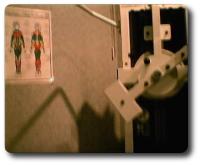Microsoft Gain Full Control of Platform?

All your bases to belong to Gates
 recently wrote about Microsoft Singularity O/S and the implication it may have on the slightly shattered Longhorn/Vista. As a new initiative is launched off the ground, I immediately get unnerving reflexes. What is most disturbing is Microsoft’s history of pushing companies away from their platform in what can be described as the “embrace, extend and extinguish” tactic. Will Singularity make the transition in strategy, namely being more ‘kind’ to third-party software, or will it only re-enforce the ‘iron fist’ regime and render third-parties obsolete?
recently wrote about Microsoft Singularity O/S and the implication it may have on the slightly shattered Longhorn/Vista. As a new initiative is launched off the ground, I immediately get unnerving reflexes. What is most disturbing is Microsoft’s history of pushing companies away from their platform in what can be described as the “embrace, extend and extinguish” tactic. Will Singularity make the transition in strategy, namely being more ‘kind’ to third-party software, or will it only re-enforce the ‘iron fist’ regime and render third-parties obsolete?
Microsoft’s history and current practices have led to friction with the European Commission. With anti-trust ignited in Korea lately, some speculate that it could lead to a quicker spread of Linux in far east Asia. Korea have requested the removal of some bundled, pre-installed software. Microsoft, in turn, threatened to take their toys and go back home.
More recently we heard that Microsoft will push towards their own implementation of anti-virus software for their own platform. By doing so, they are pushing aside companies and vendors that have taken care of that market so far, essentially making up for Microsoft’s mistakes and flaws. Ironically, Microsoft will have incentive for bug creation. After all, it will be them who can charge to have that fixed, by selling anti-virus software. In recent hours we have heard about Microsoft’s entry into VoIP — the means being a takeover of another small company.
Microsoft Office 12 is said to support PDF creation in the trunk, which has so far been possible only using Adobe’s professional and premium software. Thus, Microsoft merely take food from the mouths of Adobe developers, much like they did to Netscape. They seem determinded to intercept or steal the popular PDF format. Office which exports PDF’s is merely an unneeded bloat, as well as an imitation (see screenshot alongside more examples). For imitation and theft, Microsoft have recently lost some cases in court too. Office is no more functional than Open Office, which many still wrongly perceive as Office in a brown paperbag. Office itself evolved from existing applications that emerged in the 70′s and 80′s and it continues to be the primary money-making cow.
Any innovative software on the Windows platform is pushed outside by imitation, bundling, extension and introduction of mysterious proprietary formats. Adobe, a giant that has merged with Macromedia, are facing yet another threat from Microsoft — a Flash alternative.
Some would say that Microsoft also snub OpenGL in their next version of Windows, possibly to be dropped in favour of Microsoft´s DirectX. Some time ago I read that no support for Palm handhelds will be included in Vista either. As for the ‘Internet front’, there seems to be a push towards ASP and .Net, not to mention opaque sites that are made strictly MSIE-compatible.
What will Microsoft do about Google Desktop 2, which has just come out? Google appear to invade Microsoft’s territory and I can’t imagine that Microsoft are too happy about it. In fact, Google are their worst fear (confer Winner Takes All). The year to come will be an intersting one to observe. With Linux, Firefox and Google (among many more) spreading and reaching Average Joe’s desktop, we are yet to see changes that are difficult to ignore.
Related items:
Recommended (contextually-related) reading:






 Filed under:
Filed under: 
 ERHAPS struggling to cope with existing Windows code, an operating system like
ERHAPS struggling to cope with existing Windows code, an operating system like 
 OBERT Scoble is a well-known Microsoft evangelist and blogger. He has recently set up a free blog in wordpress.com, which is of course based on Open Source software. I decided to ask him what he was up to. I was highly skeptic as he made this questionable migration of his popular blog and heavily-requested feeds. Earlier this week I sent Scoble an E-mail and got a disappointing reply; both of which I post verbatim below:
OBERT Scoble is a well-known Microsoft evangelist and blogger. He has recently set up a free blog in wordpress.com, which is of course based on Open Source software. I decided to ask him what he was up to. I was highly skeptic as he made this questionable migration of his popular blog and heavily-requested feeds. Earlier this week I sent Scoble an E-mail and got a disappointing reply; both of which I post verbatim below:

 HATEVER operating system we use, the idea of using remote terminals should not be foreign to us. These days, it is rather common to log on to a computer remotely and manage it from afar as if we were actually there.
HATEVER operating system we use, the idea of using remote terminals should not be foreign to us. These days, it is rather common to log on to a computer remotely and manage it from afar as if we were actually there. While we should all know that it is science that drives innovation, money gets spent where the long-term future is uncertain. Television and advertisements that accompany its existence shape up a tremendous industry. However, it is a well-established fact that economy cannot safely propagate to the future (Wall street and the ‘bubble effect’) whereas exploration and new discoveries are capable of putting the States at the forefront. This all comes at a very sensitive time when the whitehouse issues budgetary cuts on science and research while creationism and defence (or contrariwise armament) are better catered for. I am truly concerned.
While we should all know that it is science that drives innovation, money gets spent where the long-term future is uncertain. Television and advertisements that accompany its existence shape up a tremendous industry. However, it is a well-established fact that economy cannot safely propagate to the future (Wall street and the ‘bubble effect’) whereas exploration and new discoveries are capable of putting the States at the forefront. This all comes at a very sensitive time when the whitehouse issues budgetary cuts on science and research while creationism and defence (or contrariwise armament) are better catered for. I am truly concerned.
 ODAY I decided to re-prioritise a few hobbies and activities in my life. Thus far things have gone rather well, but I was at times susceptible to pressure and found it hard to cope with the amount of work that came my way.
ODAY I decided to re-prioritise a few hobbies and activities in my life. Thus far things have gone rather well, but I was at times susceptible to pressure and found it hard to cope with the amount of work that came my way.